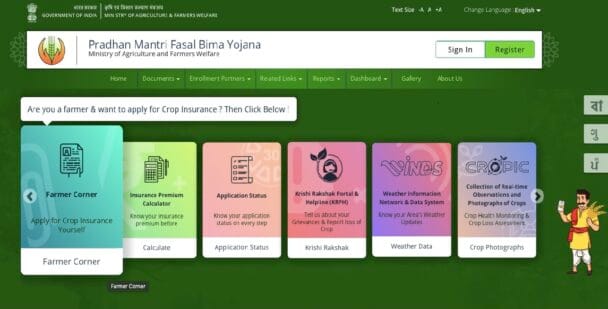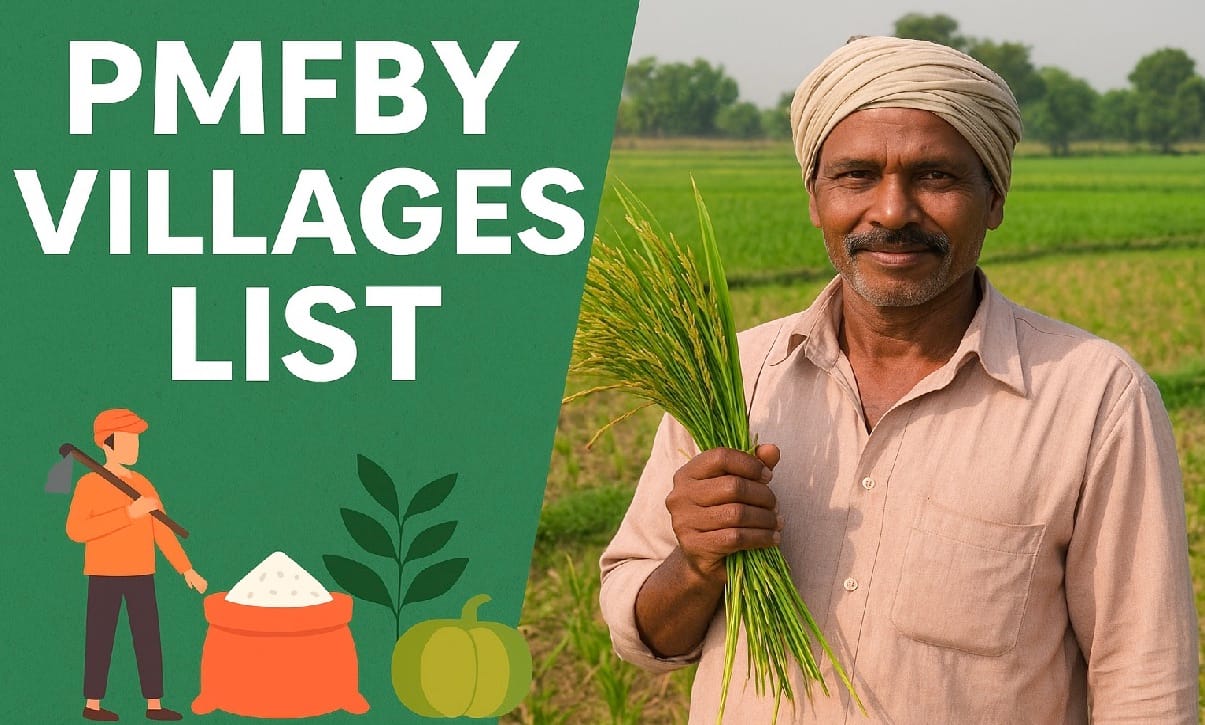PMFBY Villages List – Key Highlights
Table of Contents
show
| Feature | Details |
|---|---|
| Scheme Name | Pradhan Mantri Fasal Bima Yojana (PMFBY) |
| Launch Date | 18th February 2016 |
| Ministry | Ministry of Agriculture & Farmers’ Welfare |
| Implementing Agencies | State Governments, Insurance Companies, Banks |
| Coverage Area | Over 50 crore farmers and 50+ crops |
| Villages List Purpose | To notify eligible villages and crops for insurance |
| How to Check | State Agriculture Department or Insurance Company website |
| Update Frequency | Every cropping season (Kharif & Rabi) |
| Official Website | https://pmfby.gov.in |
What is the PMFBY Villages List?
The PMFBY Villages List is the official record of all villages where the scheme is active for a specific cropping season. It is prepared and published by the state government and implementing insurance companies. The list changes every season depending on factors like crop type, weather conditions, and state notifications. By checking this list, farmers can:- Confirm if their village is covered for PMFBY in the current season.
- Know the notified crops eligible for insurance in their area.
- Apply for crop insurance before the deadline.
Why the Villages List is Important for Farmers
- Eligibility Check – Farmers can only apply for PMFBY if their village is included in the notified list.
- Timely Application – Knowing in advance helps farmers complete the application within the deadline.
- Crop-specific Coverage – The list also mentions which crops are covered for that season in the village.
- Avoiding Fraud – Prevents ineligible claims and ensures genuine farmers get the benefit.
How to Check PMFBY Villages List Online
Farmers can check the PMFBY Villages List in a few simple steps:STEP 1: Visit the Pradhan Mantri Fasal Bima Yojana official website – https://pmfby.gov.in.STEP 2: At the home page of website, Go to the "Farmer Corner" section.
Benefits of PMFBY for Villages in the List
- Affordable Premiums – Farmers pay only 2% for Kharif crops, 1.5% for Rabi crops, and 5% for annual commercial/horticultural crops.
- Government Subsidy – Remaining premium is paid by the government; in certain states like Himachal Pradesh, J&K, and NE states, the government pays the full premium.
- Comprehensive Coverage – Protects against droughts, floods, pests, diseases, and even post-harvest losses.
- Quick Claims – Aim to settle claims within 2 months after harvest using technology like satellites and drones.
Risks Covered Under PMFBY
- Yield Losses – Damage due to natural disasters, pests, and diseases.
- Prevented Sowing – Compensation up to 25% if sowing is not possible due to bad weather.
- Post-harvest Losses – Coverage up to 14 days for crops kept in the field for drying.
- Localised Calamities – Losses due to events like hailstorms or landslides in specific farms.
Eligibility for Villages in the List
- Farmers (including tenant farmers and sharecroppers) growing notified crops in notified areas.
- Must have a valid land ownership document or tenancy agreement.
- Must apply within 2 weeks of the sowing season start.
- Should not have claimed compensation from another scheme for the same loss.

